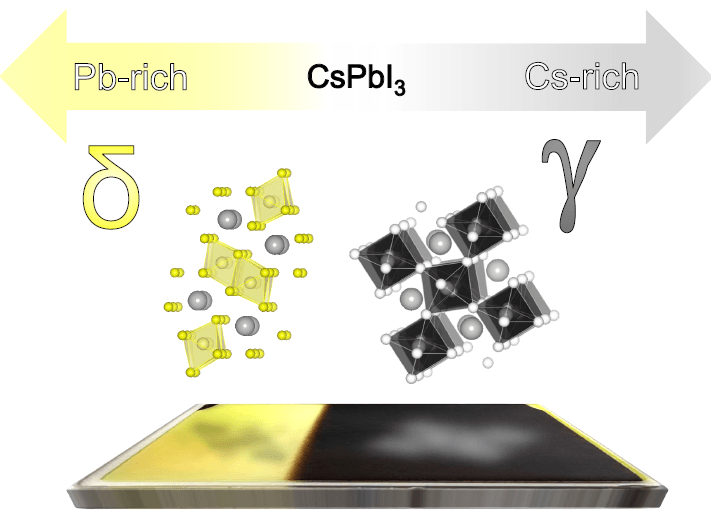Apr 30 2019
Researchers at the Helmholtz-Zentrum Berlin have successfully created inorganic perovskite thin films at moderate temperatures through co-evaporation of different elements. This latest achievement eliminates the need for post-tempering at high temperatures.
 By co-evaporation of cesium iodide and lead iodide thin layers of CsPbI3 can be produced even at moderate temperatures. An excess of cesium leads to stable perovskite phases. (Image credit: J. Marquez-Prieto/HZB)
By co-evaporation of cesium iodide and lead iodide thin layers of CsPbI3 can be produced even at moderate temperatures. An excess of cesium leads to stable perovskite phases. (Image credit: J. Marquez-Prieto/HZB)
The innovative process makes it relatively easier to create thin-film solar cells from the perovskite material. Moreover, inorganic perovskites are more thermally stable when compared to metal-organic hybrid perovskites. The results of the study have been reported in Advanced Energy Materials.
Globally, researchers are intensively working on the fabrication of perovskite solar cells. The focus is on the so-called metal-organic hybrid perovskites, the crystal structure of which s made up of inorganic elements like iodine and lead, and also an organic molecule.
CsPbI3 is an example of completely inorganic perovskite semiconductors and possesses the same crystalline structure as that of hybrid perovskites. However, these semiconductors include an alkali metal, like caesium rather than an organic molecule. As a result, they are much more stable when compared to hybrid perovskites but often need an additional production step at extreme temperatures—that is, several hundred degrees celsius.
Owing to this reason, inorganic perovskite semiconductors cannot be easily incorporated into thin-film solar cells that are unable to tolerate extremely high temperatures. Now, inorganic perovskite semiconductors have been successfully developed at moderate temperatures by a research team, led by Dr Thomas Unold, so that these materials could also be utilized in thin-film cells in the days to come.
In a novel experiment designed by the physicists, many different combinations of material within one sample were synthesized and examined. Then, through a co-evaporation of lead-iodide and caesium-iodide, the researchers created thin layers of CsPbI3, methodically changing the quantities of these elements, while keeping the temperature of the substrate below 60 °C.
A combinatorial research approach like this allows us to find optimal production parameters for new material systems much faster than with the conventional approach that typically requires 100 samples to be produced for 100 different compositions.
Dr Thomas Unold, Physicist, Department Structure and Dynamics of Energy Materials, Helmholtz-Zentrum Berlin.
Through vigilant analysis at the time of synthesis and the following measurements of the optoelectronic properties, the researchers were able to establish the impact made on the material properties by the composition of the thin film.
The measurements made by the team revealed that both structural and major optoelectronic characteristics of the material are susceptible to the ratio of caesium to lead. As a result, surplus caesium encourages a steady perovskite phase with excellent lifetimes and mobility of the charge carriers.
In collaboration with the HZB Young Investigator Group of Professor Steve Albrecht, the improved CsPbI3 layers were utilized to establish perovskite solar cells with a stable performance of approximately 11% for more than 1200 hours and an initial efficiency of over 12%.
We have shown that inorganic perovskite absorbers might also be suitable for use in thin-film solar cells if they can be manufactured adequately. We believe that there is great room for further improvements.
Dr Thomas Unold, Physicist, Department Structure and Dynamics of Energy Materials, Helmholtz-Zentrum Berlin.